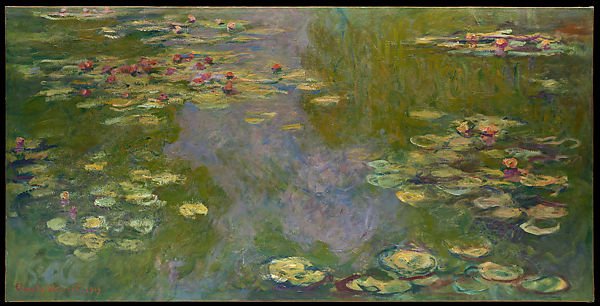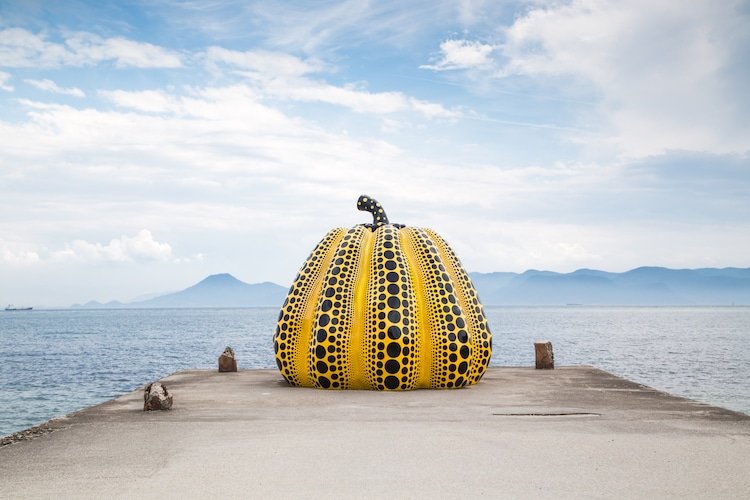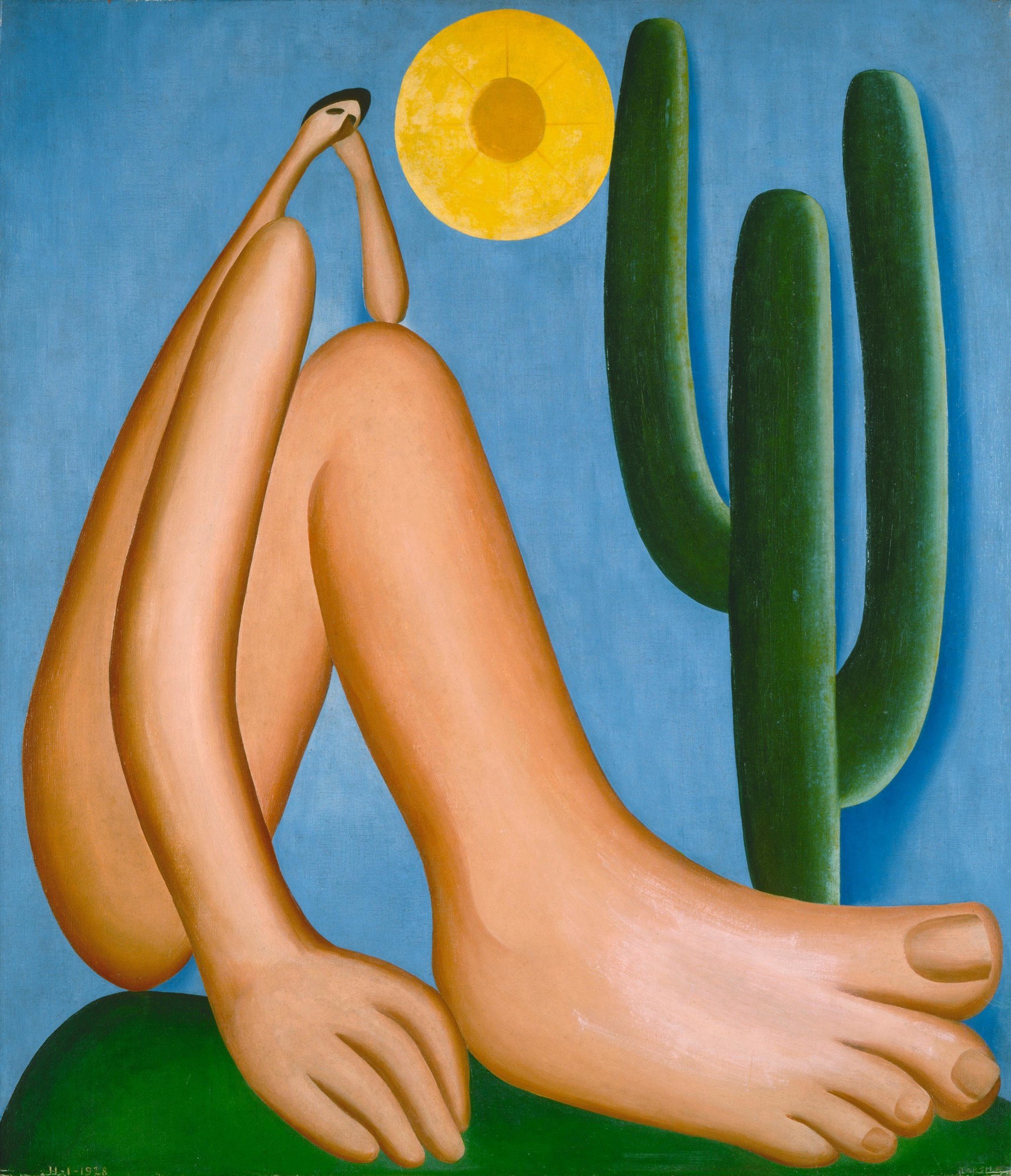
Painting by Tarsila do Amaral. 1928, Oil on canvas, 33 7/16 x 28 3/4″ (85 x 73 cm). Collection MALBA, Museo de Arte Latinoamericano de Buenos Aires. © Tarsila do Amaral Licenciamentos.
Defining Modern Art is a complicated task, as it is associated with both a historical artistic movement, as well as a series of practices and expressions unique to a specific time period. “Modern art includes artistic work produced during the period extending roughly from the 1860s to the 1970s and denotes the styles and philosophies of the art produced during that era.”1. One thing is for sure, modern artists experimented with new ways of seeing the world and nature, as they were far less focused on a narrative and more on abstraction. This accompanied a shifting cultural mindset defined by the lead-up to and eventual repercussions of the industrial revolution.
Modern art is the creative world’s response to the rationalist practices and perspectives of the new lives and ideas provided by the technological advances of the industrial age that caused contemporary society to manifest itself in new ways compared to the past.
“Modern Art Definition Overview and Analysis”. [Internet]. 2022. TheArtStory.org
Content compiled and written by Justin Wolf
The Origins of Modern Art
The centuries that came before the era of Modern Art had many advancements in the visual arts, from the Renaissance and Baroque periods to Rococo and Neoclassicism. These artistic movements all share the same technique, the idealization of subject matter. As artists usually painted not what they perceived with a subjective point of view, but instead what they envisioned as the romanticized or heightened version of their subject. 2. The movement toward the era of Modern Art came with the start of the industrial revolution in Western Europe during the mid-19th century. With technologies like the internal combustion engine, large machine-powered factories, and electrical power generation, the quality of life for people during this time period changed drastically. As many people started to move from rural farming areas to bustling cities to find work, painters also flocked to the new and exciting landscapes. These cities were now bursting with modern spectacles and fashions making them the perfect spot for artists’ observation and creative work. This new approach to painting would soon be known as Realism, inciting a contradictory artistic response in the form of other movements such as Impressionism and Dadaism. 3.
Art Movements within the Modern Era
Impressionism: Impressionism is considered to be the first artistic movement in the modern era, beginning in the mid-1800s. Painters who used this style simply observed the world as they saw it and then transformed their interpretation into a beautifully poetic and colorful image. Notable artists include: Claude Monet, Pierre Auguste Renoir, Camille Pissarro, Alfred Sisley, Berthe Morisot, Armand Guillaumin, and Frédéric Bazille.

Painting by Claude Monet. 1919 (French, Paris 1840–1926 Giverny), Oil on canvas, 39 3/4 x 78 3/4 in. (101 x 200 cm). The Walter H. and Leonore Annenberg Collection, Gift of Walter H. and Leonore Annenberg, 1998, Bequest of Walter H. Annenberg, 2002
Fauvism: Fauvism art was a brightly colored and anti-naturalistic style used by 20th-century modern French painters. These paintings usually captured scenes of landscapes with emphasized painterly qualities and bold color over the realistic values that were retained by Impressionism. Notable artists include: Henri Matisse, Maurice de Vlaminck, Matisse and Derain, André Derain, Kees van Dongen, Raoul Dufy, and Georges Braque.
Dada: Dada was both an artistic and literary movement that began in the early twentieth century following World War I. Dadaism was known for mocking and antagonizing the conventions of classical art, often emphasizing the absurd. Notable artists include: Marcel Duchamp, Raoul Hausmann, Francis Picabia, and Max Ernst.
Cubism: Cubism was a style of painting and sculpture that began in the early twentieth century, seeking to challenge the incorporation of realistic form and perspective in prior movements. Notable artists include Pablo Picasso, Georges Braque, Juan Gris, Albert Gleizes, and Paul Cézanne.

Pablo Picasso, 1921, oil on canvas, 200.7 x 222.9 cm (MOMA).
Abstract expressionism: The abstract expressionist art movement started during the mid-twentieth century in New York City. This movement used two styles: action painting and color field painting. They were both employed to create extremely evocative and emotionally-founded artworks. Notable artists include: Edvard Munch, Wassily Kandinsky, and Egon Schiele.
Surrealism: Surrealism was an art movement that began in the 1920s in hopes to release creative potential from the restrictions of reality. This style often juxtaposes images together in absurd ways in order to channel imagination, dreams, hallucinations, or even nightmares. Surrealism would also play a major role in emerging cinematic practices, particularly in the realm of experimental works. Notable artists include: Jean Arp, Max Ernst, André Masson, René Magritte, Yves Tanguy, Salvador Dalí, Pierre Roy, Paul Delvaux, and Joan Miró.
Minimalism: Minimalism was developed in the United States during the 1950s to 1960s as a response to the earlier decade’s abstract expressionist movement. This style emphasized extreme simplicity, clean lines, minimal color, and basic shapes. Notable artists include: Frank Stella, Eva Hesse, Agnes Martin, Dan Flavin, Anne Truitt, and Donald Judd.
Op art: Optical art, more commonly known as op art, was a visual art form that used geometric patterns to create the illusion of movement (such as warping or flashing). Notable artists include: Bridget Riley, Victor Vasarely, and Jesus Rafael Soto.
Pop art: Pop art was a modern art movement in the mid-twentieth century that borrowed and appropriated images from popular culture (such as newspaper advertisements, comic books, and cartoons) to create works that examined larger societal trends. Notable artists include: Andy Warhol, Roy Lichtenstein, James Rosenquist, Claes Oldenburg and Eduardo Paolozzi.

ARTISTS WORKED TO REPRESENT THEIR EXPERIENCE OF THE NEWNESS OF MODERN LIFE IN APPROPRIATELY INNOVATIVE WAYS.
“Modern Art Definition Overview and Analysis”. [Internet]. 2022. TheArtStory.org
Content compiled and written by Justin Wolf
Postmodern Art
The term Postmodern is used to describe works that were made during and after the 1960s Pop art era. Unlike Modern Art, this artistic movement included the use of new technologies in innovative ways. Creators and artists incorporated video and collage, as well as the appropriation of earlier styles in a new context. The blending of different mediums and genres into a collective whole became a common practice, introducing the sentiment of art analyzing itself. Some movements within the Postmodern style include Concept art, Installation art, Street art, Performance art, and Feminist art. 4.

Keith Haring, 1989 by Stock Photos from peepy/Shutterstock
Modern Art vs Contemporary Art
ALTHOUGH MODERN ART AS A TERM APPLIES TO A VAST NUMBER OF ARTISTIC GENRES SPANNING MORE THAN A CENTURY, AESTHETICALLY SPEAKING, MODERN ART IS CHARACTERIZED BY THE ARTIST’S INTENT TO PORTRAY A SUBJECT AS IT EXISTS IN THE WORLD, ACCORDING TO a UNIQUE PERSPECTIVE AND IS TYPIFIED BY A REJECTION OF ACCEPTED OR TRADITIONAL STYLES AND VALUES.
“Modern Art Definition Overview and Analysis”. [Internet]. 2022. TheArtStory.org
Content compiled and written by Justin Wolf
To put it simply: modern art and contemporary art are from two different time periods. Modern art references the era between the 1880s to the 1970s, while contemporary art generally includes current works (the creator is still living or has only very recently died or retired). Stylistically, modern art is usually drawing or painting while contemporary art explores more experimental mediums including video art, object design, tech-enabled artworks, graphic arts, etc. Both movements are unique reflections of the time periods in which they manifested, categorizing a larger trend towards free-form expression and a continuing reassessment of what classifies as art. 5.
“I come from a very rigorous drawing and painting background, which stretched from childhood to boarding school to my undergrad major in painting and drawing. I had to learn about making videos after graduate school, when I was no longer able to take classes. And the only way I knew to teach myself how to make a film and to work in animation was through the vernacular that I acquired from 15 or 16 years of studying painting and drawing. So, in a way, having made hundreds of paintings and drawings before ever touching a digital technology gave me a foundation to treat everything I do with a certain kind of delicacy and tactility and understanding of the power of color, the power of light, the power of perspective and composition and how much that can narratively create a crescendo that moves the viewer.”
Jacolby Satterwhite

Yayoi Kusama, 2016, 8-foot-tall sculpture.
Conclusion
In consideration of the above analysis, it is worth noting that this is not an exhaustive definition of Modern Art, but rather an overview of the key tenets and attributes of the movement as a whole. As its name would suggest, Modern Art is inextricably tied to a shifting cultural consciousness within a specific time period. Even then, our current perception of Modern Art is tied to a European-American ethnocentric conception of art and thus is not all-encompassing. However, it does mark an evolution of artistic practice and intention at an increasingly rapid rate, mirroring humanity’s own increasing awareness of self and our impact on the world. Only through the analysis and study of the history-defining works that came with Modern art can we begin to better understand ourselves and the future of art.
Sources Used
1. Atkins, Robert (1997). Artspeak: A Guide to Contemporary Ideas, Movements, and Buzzwords (2nd ed.). New York: Abbeville Press Publishers. ISBN 978-0-7892-0415-8. OCLC 605278894 – via Internet Archive.
2. https://medium.com/@tech-master-p-007/modern-art-38d11f7bc056
3. https://www.theartstory.org/definition/modern-art/history-and-concepts/
4. Clement, Russell (1996). Four French Symbolists: A Sourcebook on Pierre Puvis de Chavannes, Gustave Moreau, Odilon Redon, and Maurice Denis. Westport, Conn: Greenwood Press. ISBN 978-0-313-29752-6. OCLC 34191505.
5. https://www.eden-gallery.com/news/modern-art-vs-contemporary-art
6.https://www.moma.org/magazine/articles/734











